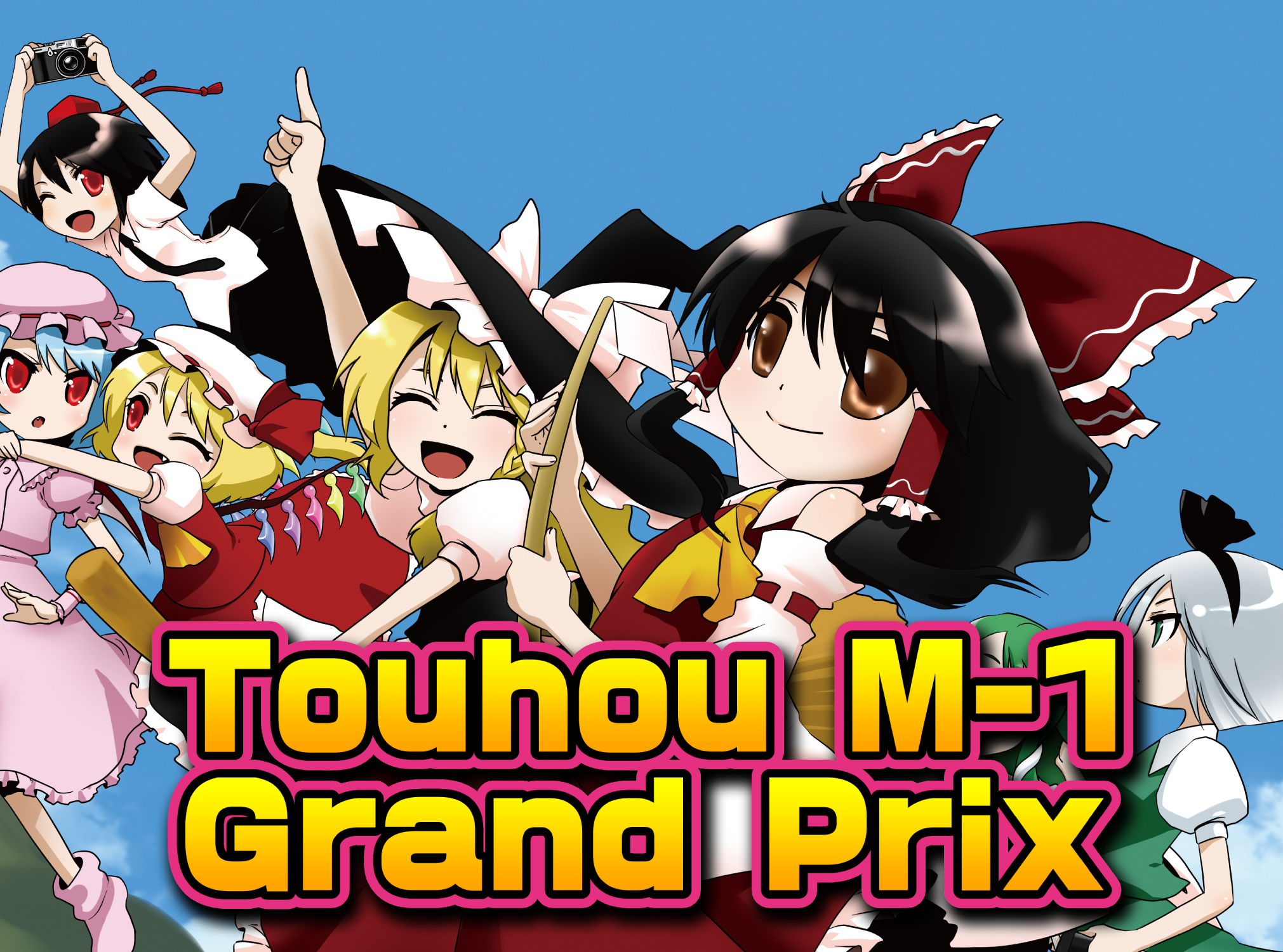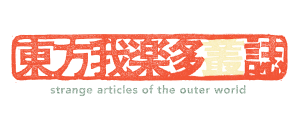Traces of Utopian Civilisation Review
A review of Aka Kyuketsuki's Hifuu-Style Album"Traces of Utopian Civilisation"

What is Traces of Utopian Civilisation?
北海道調査 ~ Traces of Utopian Civilisation is a fanmade Hifuu album, released back in July of 2017. It is 11 tracks long, consisting entirely of Touhou-style original songs, composed in its entirety by Aka Kyuketsuki. It’s also ABSOLUTELY AMAZING!!!!
*ahem*
These days, Akakyu is more well-known for Unification of the Artful Rain (both music-wise and game-wise), but music-wise, I still consider Traces of Utopian Civilization to be his best work.

It’s also criminally underrated, at least when compared to the amount of hype that Unification of the Artful Rain gets. A lot of UotAR fans gush about the OST, yet a good portion of them have probably never heard of this album, despite it being more of the same Akakyu-y goodness.
Heck, it doesn’t even have a page on Touhou wiki, which is a travesty that I hope someone (not me though. I’m too lazy) will one day fix.
So if you’re a Unification of the Artful Rain fan who’s still twiddling their thumbs waiting for the full release, maybe check out this album in the meantime. (Unless you already have, in which case, you have good taste.)
In fact, why not listen to the crossfade as you read the rest of this article?

About the Composer
I find Akakyu’s style to be very compelling, primarily for one reason: texture.
Akakyu’s songs have a rich, intricate texture, accomplished through a careful combination of composition, instrumentation, and mixing. The rich texture gives the song an ambient and atmospheric flair, much more than the usual Touhou fare.
Listening to the songs, it almost makes you feel like you have been transported to the scene itself.
At the same time, Akakyu still manages to blend in the traditional Touhou formula, though sacrificing a bit of simplicity in the melody. Then, seasoned with a pinch of spice in the harmony.
Since it’s a Hifuu album, Akakyu has more room to experiment, something that he takes full advantage of. Some of the songs in this album would be hard to fit into a game, due to not having the right pacing to be a stage or boss theme.
Then again, I find Akakyu’s style to be better suited for album and low-tension stage themes anyways, since it leans more towards the atmospheric side of things, so an album is really the perfect opportunity for him to show off.
And boy did he not disappoint. Traces of Utopian Civilization perfectly exemplifies Akakyu’s style: unlike anything I’ve heard from anyone else, yet still unmistakably Touhou.
Fun fact: The album contains 5 originals and 5 arrangements. Of the arranges, two of them are from the Unification of the Artful Rain OST (back from when UotAR: the game was just a glimmer in Akakyu’s eye) and three of them are from Dimensional Light Absence, a fangame by Team αlternative Σnding that seemingly died in development. (Team αlternative Σnding would then go on to make Glory of Deep Skies.)
…I guess you can easily twist this into a lesson about how everyone fails at first but perseverance is what matters.
The Story
“Speech is silver, silence is golden”
Just like every Hifuu album, Traces of Utopian Civilization also contains an accompanying story booklet recounting the adventures of the Secret Sealing Club.
And just like ZUN’s Hifuu stories, it’s written in a sort of stream-of-consciousness style, interlaced with philosophical musings and social commentary. This time, the story is about El Dorado.
Maribel uses her abilities to visit the peak of a snowy mountain in a dream (along with Renko), where they discover a cave leading deep below the mountain, into a city made of gold.
he city is inhabited by people too! But as the duo would soon learn, everything is free, but everyone stays silent.
As the two start getting the feeling that something is wrong with the place, they realize that other people should not be able to see Renko if this was a dream, bringing into question which side of the boundary of illusion and reality they are on.
So now, the two need to get to the bottom of why everyone in the city is so afraid to speak, and find some way to escape back to their own reality.
I am a big fan of the story. It manages to fit quite a bit of intrigue into the space of an album booklet, and manages to keep me invested all the way through. (However short that may be)
The characterization is very true to ZUN’s works. Renko still constantly tries to deduce the scientific consequences of whatever fantastical phenomenon Maribel describes.
Not to mention, the story fits the music like a glove. (Or is it the other way around?)
I felt a newfound sense of appreciation for each track after reading the corresponding story. An atmospheric-leaning backing track is exactly what you want when you want the reader to really “feel” the story.
Fun fact: Akakyu submitted the album to Touhou Station and got it showcased during the audience submission portion of the stream. (Skip to 2:52:56) Understandably, Akakyu and co. were quite excited. This directly led to a lot of western Touhou composers rushing to submit their music to the next Touhou Station stream.
My Personal Top 3 Tracks from the Album
#3: Track 5: Orwell’s Quarantined Utopia

This is a song with a lot of moving parts, and it sounds absolutely amazing when all of the moving parts interact with each other. However, the song eases you in by introducing the parts slowly.
It starts with the piano ostinato, which sounds nice enough on its own, as well as the bass. The bass is MVP in this song, because it goes absolutely all over the place.
More instruments join in, but they’re all playing their own riffs. It’s not until 40 seconds in that we have an actual melody instrument.
1 minute in is when the song really starts to kick off, but all of the previous buildup makes the payoff so much sweeter. The intricate interplay between the instruments gives the song a very rich texture. I have to imagine Akakyu had to very deliberately write all of the lines so that they would sound good together.
#2: Track 4: Curious Capital of Sheen and Beauty

The song immediately starts off strong with the chorus. The chorus appears again halfway through and at the end.
The chorus is the main reason I love this song so much. It perfectly encapsulates the title of the piece. You really feel like you’re witnessing some fabled, wondrous place; a capital of sheen and beauty.The sections linking the chorus are no slouch either, staying on-theme and keeping up the momentum. I also appreciate how the sections before the choruses drop off a bit in intensity, increasing the payoff when the chorus finally hits. You really feel it during the final chorus, since it’s more decorated than the previous ones.
#1: Track 10: Two Snowflakes Wafting Above One Big World

The intro is the best part of the song, the melody and instrumentation working in perfect harmony to convey a sense of both solitude and freedom. It builds up very nicely, from just solo piano to bells and drums.
As the song develops, more instruments and melodies come in; the solitude melts away, and only the sense of freedom remains. Halfway through though, the song suddenly reverts to the intro. The way the song transitions from fully developed back down to where it started is immaculate.
The song then loops, but with a more developed climax, including a piano spam section. Then it ends the same way it started: with the mono piano intro.
This song takes me on an emotional journey; the sort of stuff that you can really only do in album songs. So kudos to Akakyu for taking full advantage of the medium. It’s also the perfect way to cap off an amazing album.
Get out there!
If you like Touhou-style music, or if you’re just interested in general, I hope this article has convinced you to give this album a listen if you haven’t already.
You can listen to the whole album on Youtube.
You can also download the album for free on Bandcamp. (though you can always toss Akakyu a few bucks if you’re feeling nice)




